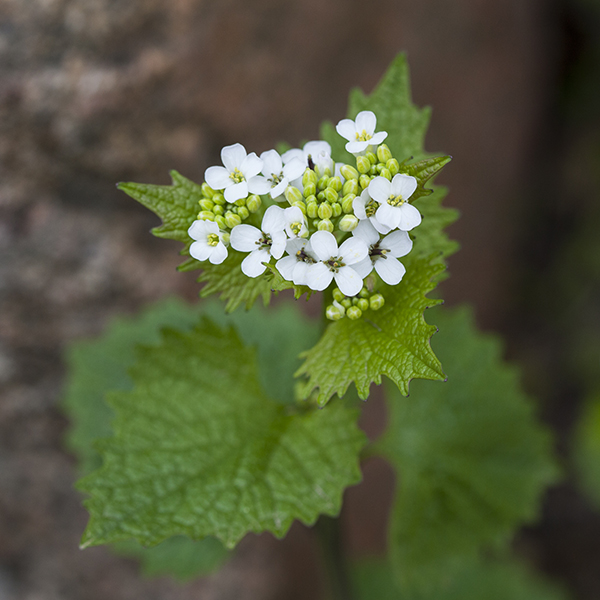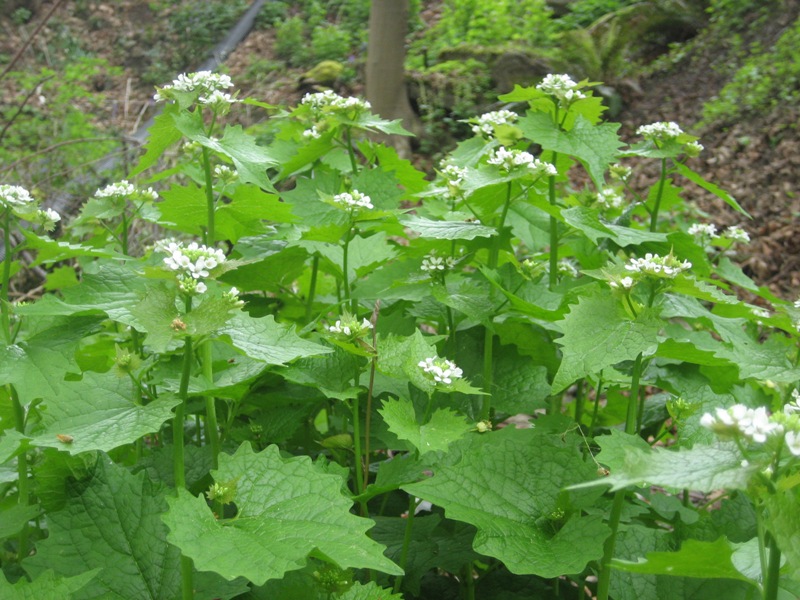Garlic Mustard Weed: The Invasive Pest That's Taking Over Your Backyard
Garlic mustard (Alliaria petiolata) is an invasive weed that is rapidly spreading throughout North America. It is native to Europe and Asia, and was first introduced to North America in the 1860s as a garden plant. However, it quickly escaped cultivation and began to naturalize in the wild.
Garlic mustard is a biennial plant, which means that it takes two years to complete its life cycle. In the first year, it forms a basal rosette of leaves. In the second year, it produces a tall flower stalk that can reach up to 6 feet in height. The flowers are white and arranged in clusters. After the flowers bloom, the plant produces seeds that can remain viable in the soil for up to 10 years.
Garlic mustard is a prolific producer of seeds. A single plant can produce up to 5,000 seeds. These seeds are easily dispersed by wind and water, and can travel long distances. Garlic mustard can also spread vegetatively by its roots.
Garlic mustard is an aggressive invader that can quickly outcompete native plants. It does this by producing chemicals that inhibit the growth of other plants. Garlic mustard can also shade out native plants, preventing them from getting the sunlight they need to grow.
As a result of its invasive nature, garlic mustard is a threat to native plant communities in a variety of habitats, including forests, meadows, and wetlands. It can also reduce biodiversity and alter the ecosystem balance.
[Main Content]
There are a number of things that can be done to control garlic mustard. One of the most effective methods is to pull the plants by hand before they go to seed. This should be done in the spring, when the plants are still small and easy to remove. When pulling garlic mustard, it is important to remove the entire plant, including the roots. If any part of the plant is left in the ground, it can resprout.
Another effective method of control is to mow garlic mustard plants before they flower. This will prevent them from producing seeds. However, mowing should be done regularly, as garlic mustard can quickly resprout.
Chemical herbicides can also be used to control garlic mustard. However, herbicides should be used as a last resort, as they can be harmful to the environment.
In addition to controlling garlic mustard, it is also important to prevent it from spreading. This can be done by removing any garlic mustard plants that you see in your yard or garden. You should also avoid planting garlic mustard in your garden, as even a single plant can quickly become a problem.
If you are concerned about garlic mustard in your area, you can contact your local conservation department for more information about control methods.
[Conclusion]
Garlic mustard is a serious invasive weed that can have a significant impact on native plant communities. However, there are a number of things that can be done to control it. By pulling, mowing, or using herbicides, you can help to prevent garlic mustard from spreading and harming your local ecosystem.
Garlic mustard is an invasive weed that can crowd out native plants and disrupt ecosystems. If you see garlic mustard in your area, it's important to remove it to help protect the environment.
But what exactly is garlic mustard? And how can you identify it?
Garlic mustard is a biennial plant that grows up to 3 feet tall. It has heart-shaped leaves with toothed edges and clusters of small, white flowers. The plant has a strong garlic odor when crushed.
Garlic mustard is most commonly found in upland or floodplain forests, savannas, roadsides, and trail edges. It can also be found in disturbed areas, such as areas that have been logged or cleared for development.
If you think you've seen garlic mustard, the best way to confirm is to visit Garden Wiki. This website has a wealth of information about garlic mustard, including identification tips, control methods, and resources for reporting sightings.
FAQ of garlic mustard weed
1. What is garlic mustard weed?
Garlic mustard is an invasive plant that is native to Europe and Asia. It was first introduced to North America in the early 1800s and has since spread to much of the eastern and northeastern United States. Garlic mustard is a biennial plant, which means it takes two years to complete its life cycle. In its first year, it forms a rosette of leaves at the ground. In its second year, it produces a tall stalk with white flowers and seeds.
2. What are the risks of garlic mustard weed?
Garlic mustard is a threat to the biodiversity of many native ecosystems. It spreads its seeds in the wind and gains a foothold in fields and forests by emerging earlier in spring than many native plants. Garlic mustard can outcompete native plants for sunlight, water, and nutrients. It can also release chemicals that suppress the growth of other plants.
3. How can I identify garlic mustard weed?
Garlic mustard can be identified by its distinctive garlicky smell, its white flowers, and its triangular-shaped leaves with sharply toothed edges. In its first year, garlic mustard forms a rosette of leaves at the ground. In its second year, it produces a tall stalk with white flowers and seeds.
4. How can I control garlic mustard weed?
There are a number of ways to control garlic mustard weed. One way is to hand-pull the plants before they flower and set seed. Another way is to mow the plants before they flower. You can also smother garlic mustard plants with a tarp or black plastic. Biological control agents, such as insects that feed on garlic mustard, are also being developed.
5. How can I report garlic mustard infestations?
If you see garlic mustard weed on your property, you can report it to your local cooperative extension office or natural resources agency. You can also report infestations to the Garlic Mustard Initiative, a national organization that is working to control garlic mustard.
Image of garlic mustard weed
- Image 1: A close-up of a garlic mustard plant with its distinctive heart-shaped leaves and white flowers.
- Image 2: A field of garlic mustard plants, with their bright green leaves and white flowers.
- Image 3: A garlic mustard plant with its leaves crushed, releasing a strong garlic scent.
- Image 4: A garlic mustard plant with its seeds, which are small and black.
- Image 5: A garlic mustard plant growing in a forest, competing with native plants for resources.


Post a Comment for "Garlic Mustard Weed: The Invasive Pest That's Taking Over Your Backyard"